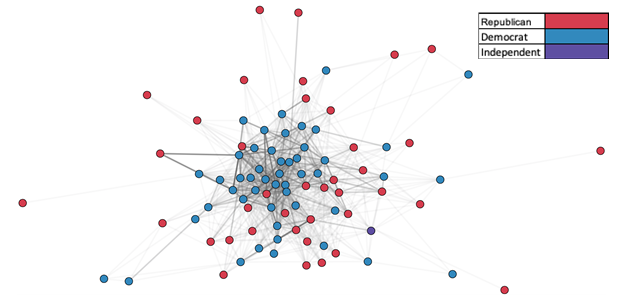Featured Topics
Featured Products
Events
S&P Global Offerings
Featured Topics
Featured Products
Events
S&P Global Offerings
Featured Topics
Featured Products
Events
S&P Global Offerings
Featured Topics
Featured Products
Events
Financial and Market intelligence
Fundamental & Alternative Datasets
Banking & Capital Markets
Economy & Finance
Energy Transition & Sustainability
Technology & Innovation
Podcasts & Newsletters
Financial and Market intelligence
Fundamental & Alternative Datasets
Banking & Capital Markets
Economy & Finance
Energy Transition & Sustainability
Technology & Innovation
Podcasts & Newsletters
Research — 13 Jul, 2021
By Eric Oak and Chris Rogers
Highlights
Networks can be created out of almost any dataset that captures relationships.
Network analysis uncovers insights hidden in tabular data: the most influential person in your network, how two companies are connected, structural holes in supply chains, or a key employee.
Metrics such as betweenness centrality model concepts like importance, identifying key objects. This can help make decisions or find nodes for further analysis like key suppliers or executives.
Investment analysis has evolved beyond financial data to non-financial, or alternative data. Typically, the focus has been on using alternative datasets that are purely time-series and tabular, which is suited to stock selection models. Graph networks meanwhile offer investors the ability to gain deeper insights into the connections between economies, industries, and individual corporations. Examples of networks include corporate stock holdings, analysts’ stock coverage, management board memberships, political relationships, common patents, and supply chains.
Graph networks give additional insights as:
This report introduces the fundamentals of graph theory by modeling the relationships among members of the 112th U.S. Senate through their sponsorships of finance bills that were passed (Figure1). The visualization shows Senators with more connections (influence, importance) in the center while Senators with fewer connections are on the outside. This shows the influence held by Senators in passing Finance related bills with Senators including Sherrod Brown, the Chairman of the Senate Banking Subcommittee on Financial Institutions and Consumer Protection, appearing in the center.
Figure 1: Senate Finance Related Co-sponsorships in the 112th Congress

Source: FiscalNote and S&P Global Market Intelligence Quantamental Research. Data as of 06/09/2021.
DOWNLOAD THE FULL REPORT
RESEARCH
Products & Offerings